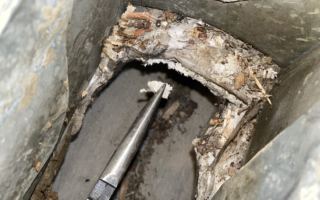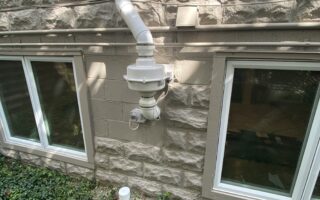When thinking about your home, you may be wondering, “is my home healthy?”
Of course, this is a loaded question but one thing to keep in mind is that your home is to be treated with the utmost respect by whomever you hire to consult with.
There are many aspects to owning, buying, or even building a Healthy Home™. In this blog post we aim to describe three of the most important things to keep in mind for creating and maintaining a Healthy Home™.
Asbestos
Asbestos is a naturally occurring mineral put into over 3,000 building products. Many of these applications are common to see used in homes built up until the 1980’s before it was discovered a now well-known carcinogen. However, there is no true “cutoff” year for the use of asbestos, as many contractors have and still may use or purchase asbestos-containing materials, possibly without even knowing!
We often find common asbestos containing materials such as floor tiles, ceiling tiles, pipe insulation, HVAC insulations such as duct wrap and acoustical strips, plaster, drywall, textured walls and ceilings, and much more. The only way to truly know if a material contains asbestos is to have it tested and analyzed by an independent laboratory.
Asbestos is typically not an issue unless it becomes damaged or disturbed. When assessing asbestos, it’s important to consider condition, exposure, and risk for damage. Many times asbestos becomes uncovered during a home renovation project so make sure you consult with us before you start your plans.
Mold
Mold is also a natural part of the environment. Spores of mold exist floating in the outside air which is why any type of indoor mold testing should compare to outside levels. Unlike asbestos, mold can grow and spread based on the conditions of the environment.
The most common places in your home to find mold are dark and damp. High humidity and lack of air flow promotes fungal growth and multiplication, which is why we often find elevated levels of mold in basements and bathrooms. Bleach is not always great idea to use on mold for many reasons…we can help you determine healthy alternatives for removing mold.
Radon
Another natural, yet deadly hazard to be aware of in homes and buildings is radon gas. Radon is a radioactive byproduct from decaying rocks under the earth’s surface. It is currently the second leading cause of lung cancer in the United States, second to smoking. Approximately one in five homes has elevated levels of radon.
The EPA action level for radon is 4.0 pCi/L, but because of the fluctuating nature of air flow, we recommend mitigation at levels above 2.0 pCi/L. You should always test your home for radon, because it is a colorless, odorless gas that can cause cancer in even healthy people.
Contact Us
Call or Text Healthy Homes at 248.962.6095 to learn more about answering the question of “Is my home healthy?” We provide expert information based on each individual home, as well as cost-effective solutions to make your home a Healthy Home™. Answering this question requires a unique investigation of your home, and we would be happy to help you!





